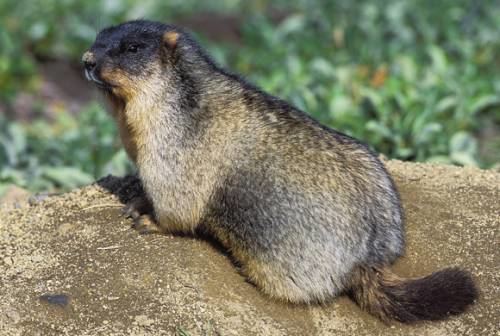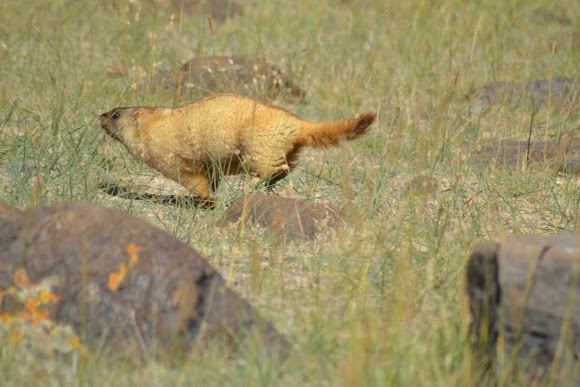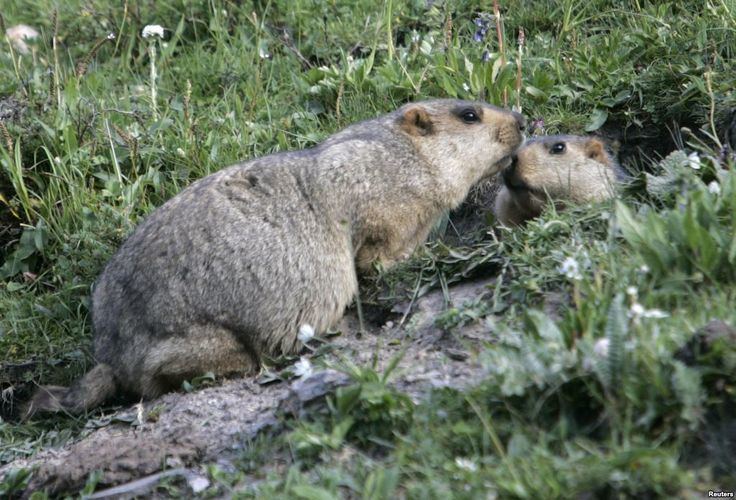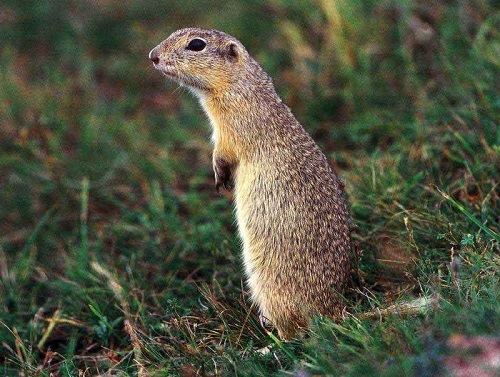Scientific name Marmota sibirica | Subgenus Marmota Higher classification Marmot | |
 | ||
Similar | ||
tarbagan marmot and isabelline wheatear
The Tarbagan marmot (Marmota sibirica) is a species of rodent in the family Sciuridae. It is found in China (Inner Mongolia and Heilongjiang), northern and western Mongolia, and Russia (southwest Siberia, Tuva, Transbaikalia). In the Mongolian Altai the range overlaps with that of the Gray marmot. The species was classified as endangered by the IUCN in 2008.
Contents

Two subspecies are distinguished:
As a game animal

The tarbagan marmot has been eaten for centuries in the native cuisine of Mongolia, and in particular are used to make a dish called boodog. The meat is cooked by inserting hot stones, preheated in a fire, into the abdominal cavity of a deboned marmot. The skin is then tied up to make a bag within which the meat cooks. Hunting of marmots for food is typically done in autumn when the animals are heavier since they are preparing for hibernation.

The Russian explorer Richard Maack, who encountered tarbagans in the Ingoda Valley in Siberia, described the tarbagan hunt as follows:

Hunting the tarbagan is quite difficult. It is not easy to approach to a tarbagan within a rifle shot; besides, the wary animal never goes far from its burrow, and, if it is not killed right away, always manage to hide in the burrow. In that case one needs to dig it out, which involves a lot of labor, as tarbagans' burrows are quite deep.
As a disease carrier

Epizootics of the plague are known to occur in tarbagan marmots in northeastern China and Mongolia. The plague in marmots is of the pneumonic form, spread by marmots coughing. The plague can jump from marmots to human through the bite of the tarbagan flea (Ceratophyllus silantievi), or through consumption of meat. Marmot epizootics are known to co-occur with human epidemics in the same area. Human plague epidemics in this area are largely pneumonic plague, the most deadly form of plague.

